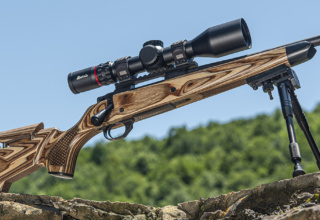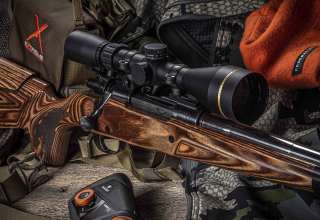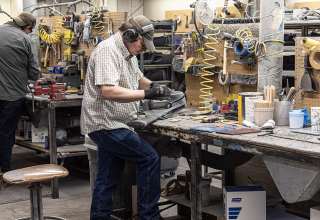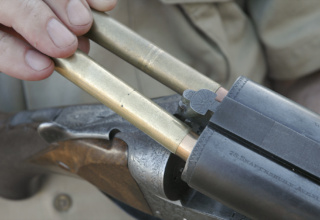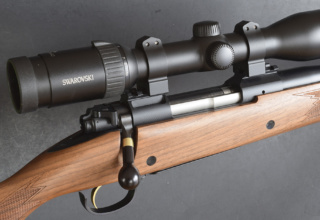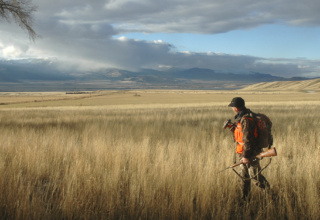Rifle accuracy hardly ever affects a hunt. The rifle’s stock affects your accuracy, which does!
by Wayne van Zwoll
A rifle that prints softball-size groups — abysmal performance these days — still keeps bullets well inside a deer’s chest at 300 yards, much farther than most deer are shot. What’s telling at ordinary hunting yardage is not rifle accuracy but marksmanship. Catching aim quickly and steadying the rifle for the short time you have to fire matters as much as your trigger squeeze. A well-proportioned stock makes the rifle an extension of your arm and hand.
A Kentucky “long rifle” had a slim stock with a lot of drop at the comb, and a crescent butt-plate. It suited low sights and a shooting style that put the butt-plate on the upper arm, not inside the shoulder. On average, people of America’s 18th-century frontier were of slighter build than their well-fed descendants, so stocks of Kentucky rifles can seem short to us. The crescent butt-plate outlived its utility in the late 19th century, after the debut of breech-loading rifles firing sharp-kicking smokeless loads. Short stocks held on through the production of 1903 Springfields, a reason many shooters of that time learned to fire with their thumb alongside the tang, not hooked over the grip where it could bang their nose.

Modern stocks on assembly-line rifles are a sum of compromises that suit them to many shooters well enough — but to few perfectly. People of various shapes and sizes adapt to them as to wheelbarrows, shovels, ax handles, and baseball bats. Time in hand can make any stock feel natural. I have long arms and by common logic can best use a 14-inch stock. After decades shooting with stocks of standard 13 ½-inch pull, I am used to them, but have found Galco’s leather slip-on pad, secured by a Velcro flap, an easy, attractive solution to a stock that feels too short. This boot looks classy on any rifle or shotgun. On and off in wink, it leaves no scars and comes in five sizes to fit a wide range of butt-stocks.

You needn’t put up with a stock that doesn’t fit — or one that once did but hasn’t kept pace with changes in your pectorals or hunting garb, or won’t align your eye with a new scope in tall rings.
An aftermarket stock can make a rifle easier to carry, faster on target, more comfortable in recoil. It can even help you cycle the action for a second shot.
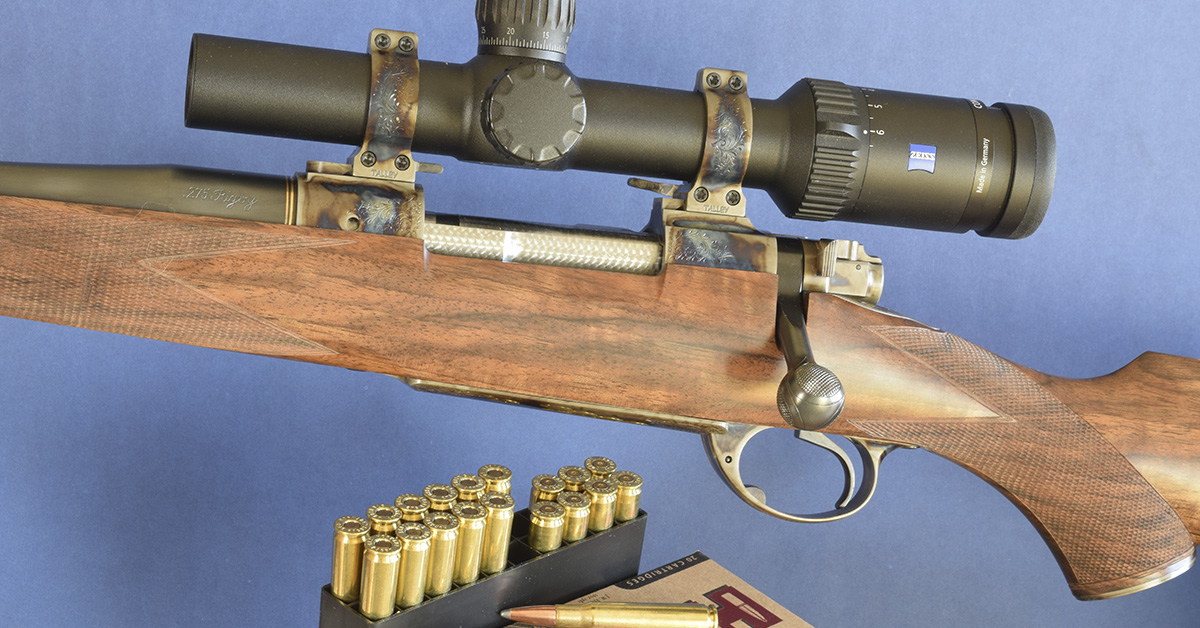
While adding a cheek pad or changing the butt-pad can tweak dimensions to your benefit, other points of contact matter too. For best performance, a stock must fit in several subtle ways. You’re smart to pause before altering an original stock. Keeping it as-is will enhance the rifle’s re-sale value and remain an option for various tasks.
Want to enter a long-range match? A prone-style stock can make you more competitive. Have a rifle stocked in fine walnut? A second, utilitarian stock can take its place when you cruise Alaska’s coast in a salt-water skiff, glassing for bears in the rain.
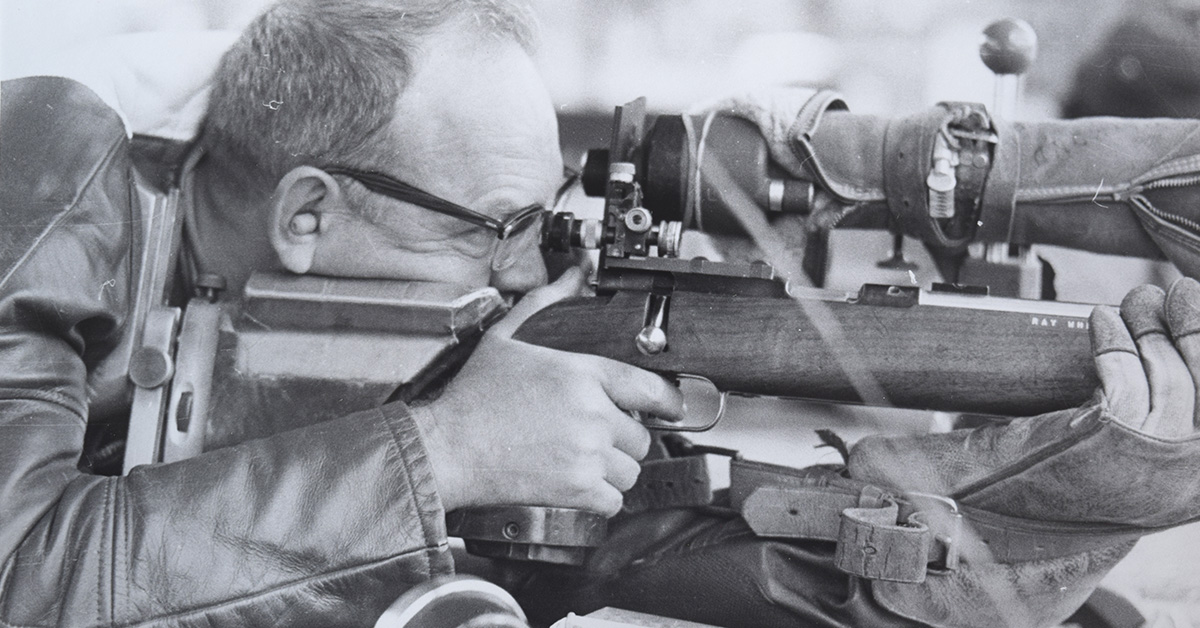
Synthetic stocks of reinforced carbon fiber (CF) are much lighter and more fetching than molded polymer stocks — though they lack the warmth of wood and cost more than utility-grade walnut. While CF stocks are less affected by weather than is wood, they aren’t as easily modified.
Stock profiles keep evolving. The long, slender, open wrists of early Mannlicher-Schoenauers are reflected in top-shelf custom rifles and stocks by the likes of Brown, H-S Precision, and High Tech. But thick, steep grips are taking over on production-line rifles. Some are nearly vertical, ill-suited for a thumb-over hold. While these grips work well from the bench and prone, they’re awkward and slow in catch-as-catch-can shooting positions, and unwieldy to carry.

For hunting, I prefer a slim, linear stock, its open grip vertically oval in cross-section and slightly wider at the base, with generous comb fluting for the heel of my hand. No palm swell, please. Cheeking and swinging the rifle, my hands will want to shift slightly.
Like me, you may find a broomstick easy to point. The most nimble rifle-stocks are slender and quite straight; but you shouldn’t have to press your cheek hard against the comb or cant your head. Broad, flat-bellied forends are as limiting as steep, fat grips. A slim, gently tapered forend, pear-shaped in cross-section, feels best to me.

Good balance is hard to describe; you’ll know it when you feel it. For speed, comfort, and control, a rifle’s mass should lie low between the hands. A slight tilt toward the muzzle can help settle the sight on target and limit lift in recoil. A butt-heavy rifle bobs about up front. A muzzle-heavy rifle is sluggish and tires you when you must hold it a long time.

Refining shape and balance is an easier task with wood than with synthetic stocks. Some custom stockers start with a virgin walnut blank. This is demanding work. I’ve watched ace stocker Gary Goudy straddle a stool and bring a draw shave as burly as a scythe down on a $1,500 stick of French, great tawny curls expiring in piles on the floor. Better him than me.
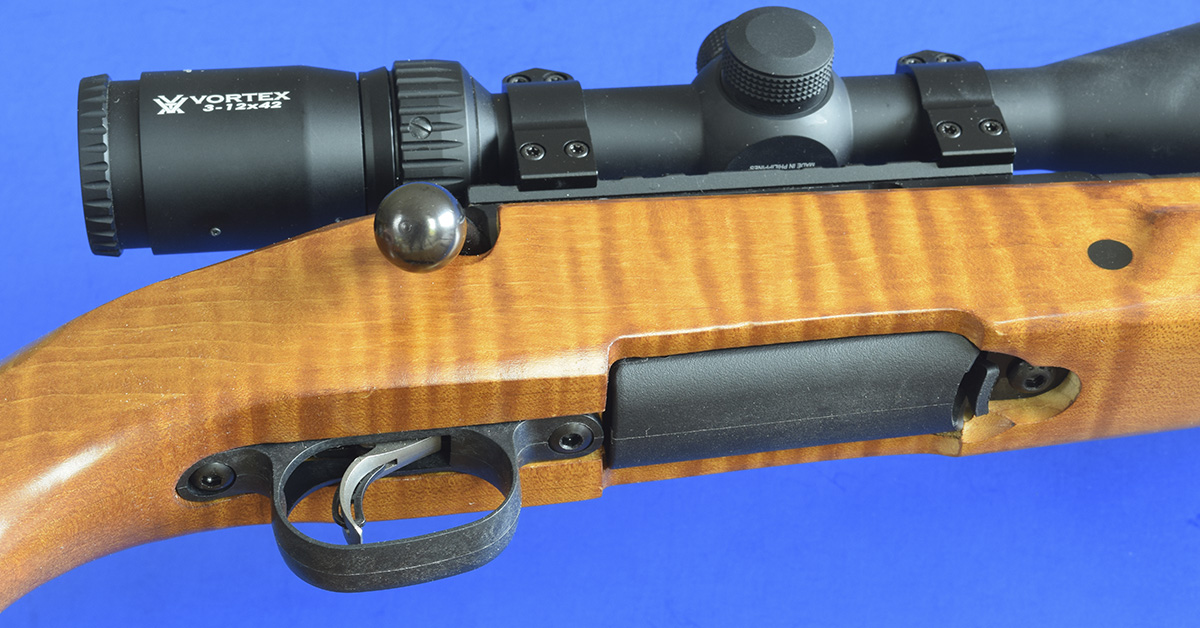
Once upon a time, you could buy inexpensive semi-inletted American walnut blanks from outlets like Herter’s. My first from that Minnesota mail-order house cost $7.50. A winter’s labor with primitive tools helped me shoe-horn my cosmolened SMLE into that wood. These days, fitting aftermarket stocks is easier. Wood stocks from Boyds bless most bolt rifles with drop-in fit.
“This business grabbed me by the collar, and I’ve not been able to shake loose!” said Randy Boyd when we first met. But his aw-shucks manner belied great talent, drive, and optimism. Twenty years after its founding, Boyds Gunstock Industries had become the country’s biggest supplier of wood stocks. It has grown steadily since. The 50,000-square-foot factory in Mitchell, South Dakota gets tractor-trailer loads of walnut weekly — tons of wood from mills in California, Iowa, and Missouri. Colorful laminates arrive, too, from companies that sprouted after a catastrophic fire at Rutland Plywood.
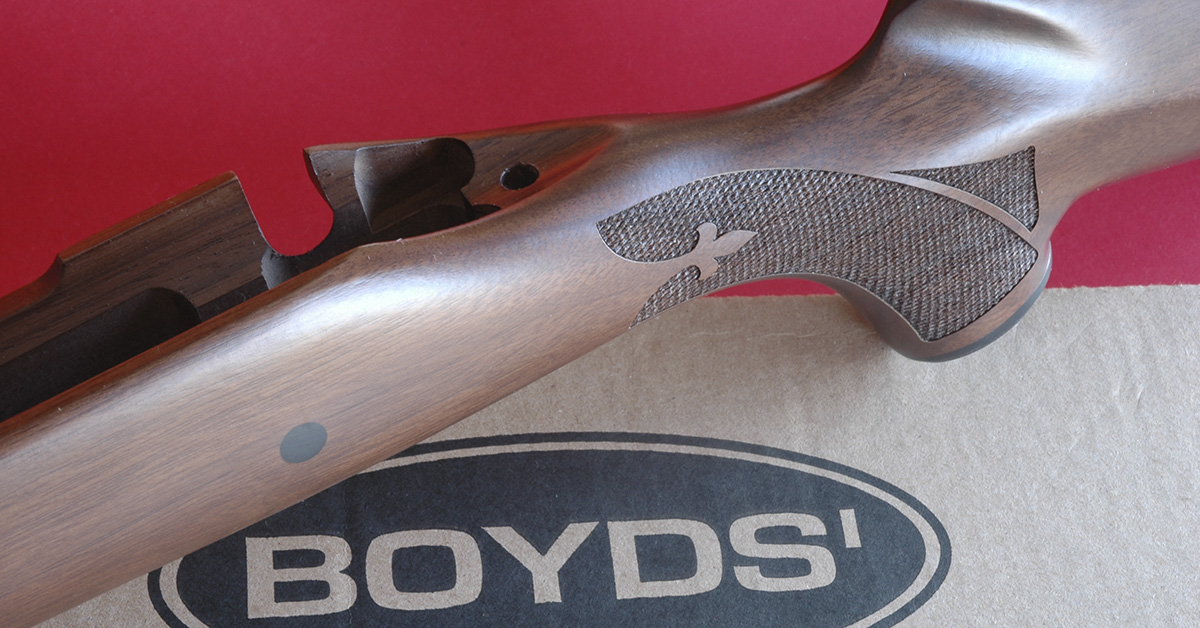
Randy grew up in Geddes, a community 70 miles from Mitchell. He swapped a weary Plymouth for two Mauser rifles, which he refurbished in his father’s gun-shop “and sold back for a modest profit.” His father’s heart attack put Randy in charge. “Our shop was a grainery. In winter, its wood stove fought sub-zero cold.” He bought a two-spindle duplicator and began turning gun stocks.
A 1986 request for 100 stocks per week from the makers of Chipmunk rifles prompted Randy and his new bride Sheila to buy three high-volume duplicators. CNC machines followed. When in 1997 E.C. Bishop and Reinhard Fajen closed their doors, Boyds ramped up production. OEM stocks for firearms manufacturers hiked output, keeping a lid on prices. Precise machining yielded drop-in fit for a growing number of rifles and shotguns.
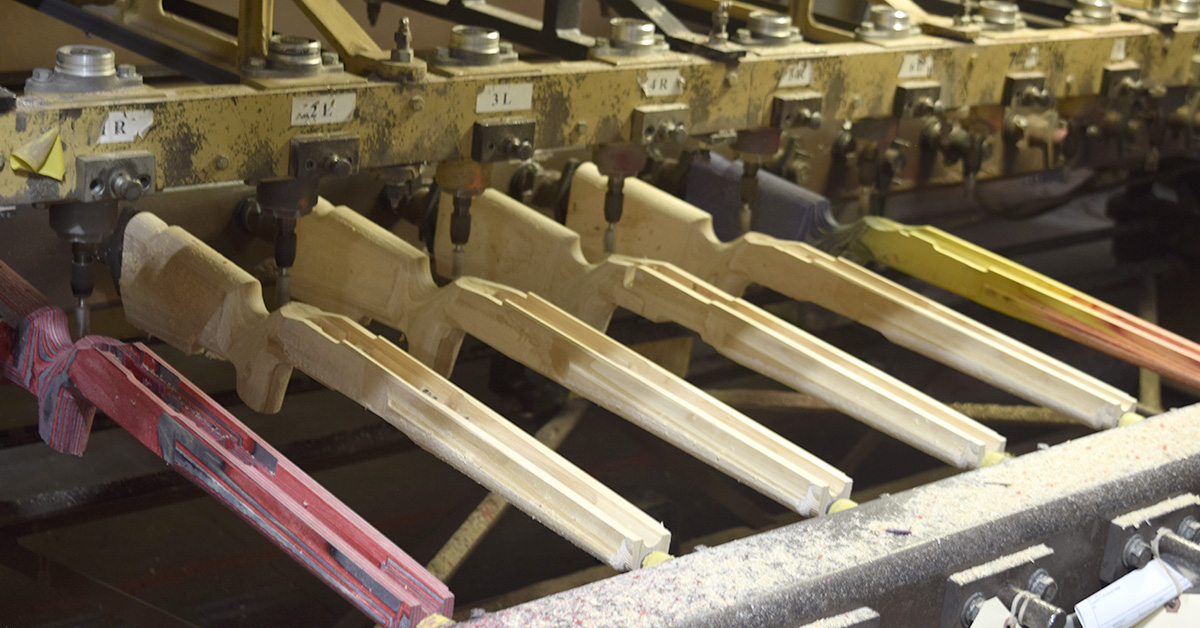
“We now make stocks for 255 brands and 1,200 models,” said Dustin Knutson, who manages the Boyds operation these days. We were sharing an elk camp a few seasons back. His would be the only bull shot on that hunt, as heavy Montana snow shuffled elk herds in the Little Belts. Dustin’s Winchester M70 wore Boyds’ then-new At-One stock. It had interchangeable polymer grip panels and push-button comb and length adjustments. I’d used an At-One on a Savage rifle to take a whitetail buck and found its beefy profile worked best from prone.
Having installed Boyds stocks on rifles from five manufacturers, I owe my cheery countenance to their drop-in fit. Glass bedding the recoil lug in aftermarket wood to prevent splits and afford the metal consistent contact is unnecessary with Boyds stocks. Dustin told me some customers still request it. “But we’re not a gunsmithing shop and don’t offer that service. We make sound, handsome, affordable stocks closely machined for no-fuss assembly.”

Boyds — now Boyds Hardwood Gunstocks — sells through a network of 100 dealers, and a website that offers myriad options. “We list 11 shapes and 20 color combinations for the Remington SPS alone,” said Dustin. “You specify stock material and length, and pick laminate colors, recoil pad, checkering, grip cap, forend tip…” Laminates drive sales at Boyds; walnut draws about 20 percent of the orders.
I took that bait again recently, ordering a new Boyds stock for a Ruger American. “The Agility is our latest design,” said Richard Hoffarth, who keeps me up to date on Boyds. “It’s not as bulky as the At-One.” I specified solid maple without the optional adjustable comb. The standard comb was just enough higher than the Ruger’s, which fell shy of supporting my face behind a rail-mounted scope.
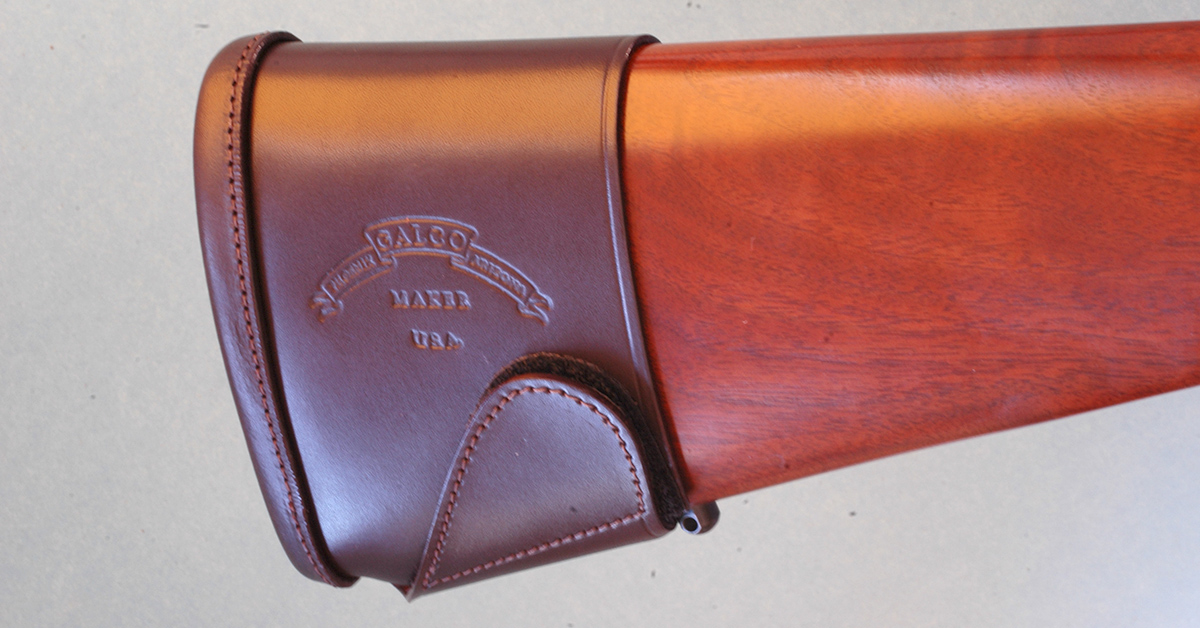
The stock arrived promptly. It included all necessary hardware — even a trigger guard with tabs and screws to replace the Ruger’s integral guard. Parts came together without shaving wood. The butt-plate length adjustment was a tad stubborn — my only criticism. The rifle’s detachable magazine slipped neatly into its cavity and latched. The stock’s finish is very tough, and resistant to water and chemicals.
I like the Agility, in hand and in profile. Its grip is longer, slimmer, more open than the At-One’s. Generous fluting accepts my palm. The forend is easy to grasp in any position, and it’s artfully broadened slightly ahead of the magazine. There’s a modest hook in the toe-line to accept hand or toe bag for quick steadying and elevation adjustment prone. No unnecessary bulk around the receiver. The comb aligns my eye with the scope’s axis.
As McMillan set the standard for fiberglass competition rifle-stocks, Boyds has become the go-to source of wood stocks for every purpose. If every so often your chance at game comes faster than you can catch a sight picture, a stock you’ll have configured yourself might just send that bullet to the vitals!


